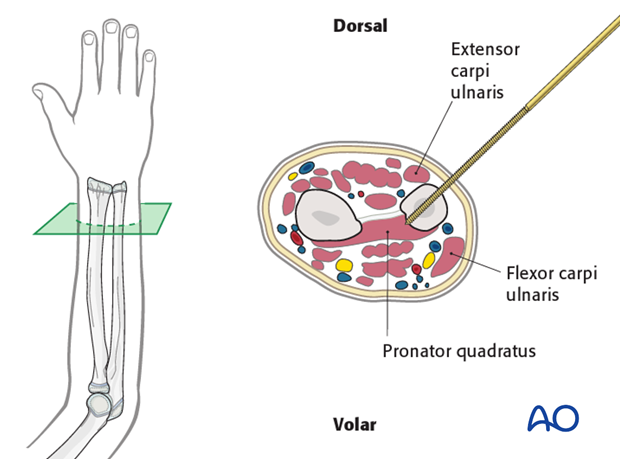Safe zones for pin placement in the pediatric ulna
1. Introduction
Inserting percutaneous instrumentation through safe zones reduces the risk of damage to neurovascular structures and the physes.
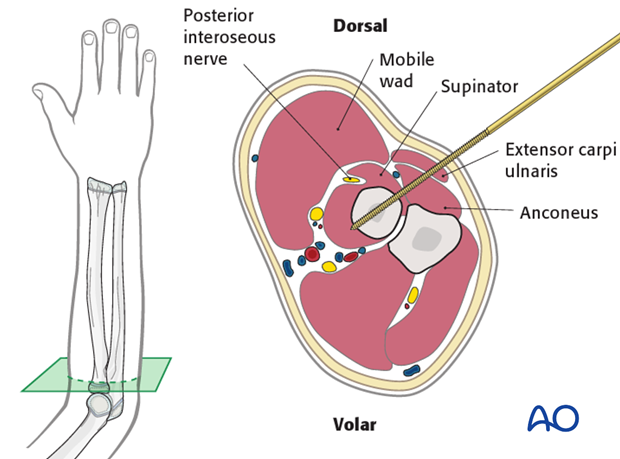
2. Anatomical considerations
The forearm anatomy is complex due to the presence of three major neurovascular bundles. For ulnar pin placement there is a particular risk to:
- Ulnar nerve
- Ulnar artery
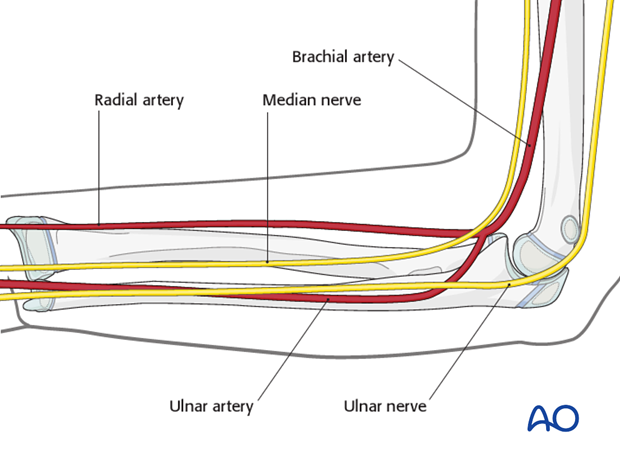
Forearm position
The anatomical relationships are complex because they depend on the position of the hand (rotational orientation). For pin insertion in both radius and ulna, the neutral position of the hand is most often used.

Skin and soft-tissue protection
Pins should be inserted at sites where the soft-tissue envelope is as thin as possible and between muscle compartments, not through them.
3. Safe zones in the ulna (neutral position)
The distal (4/5) safe zone is along the shaft between the extensor carpi ulnaris and the flexor carpi ulnaris.
The proximal (1/5) safe zone is along the shaft between anconeus and the flexor carpi ulnaris.
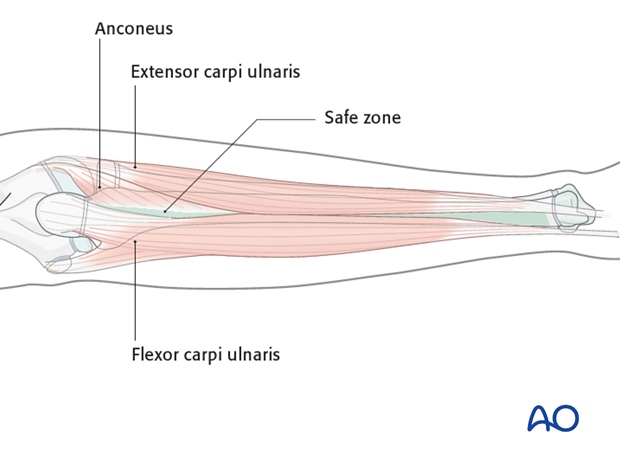
This cross-section illustrates a pin inserted into the proximal ulna.
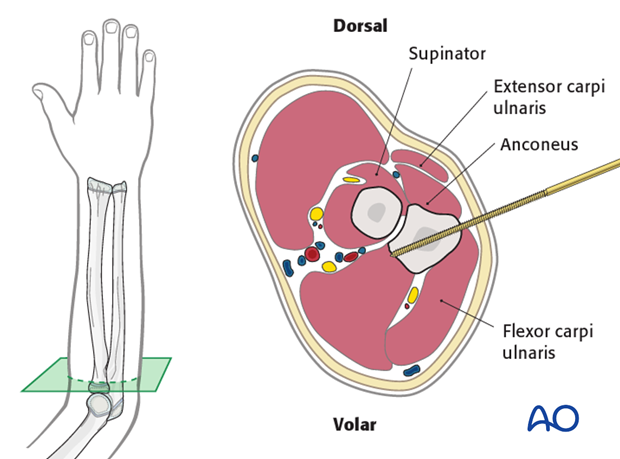
This cross-section illustrates a pin inserted into the distal ulna.
